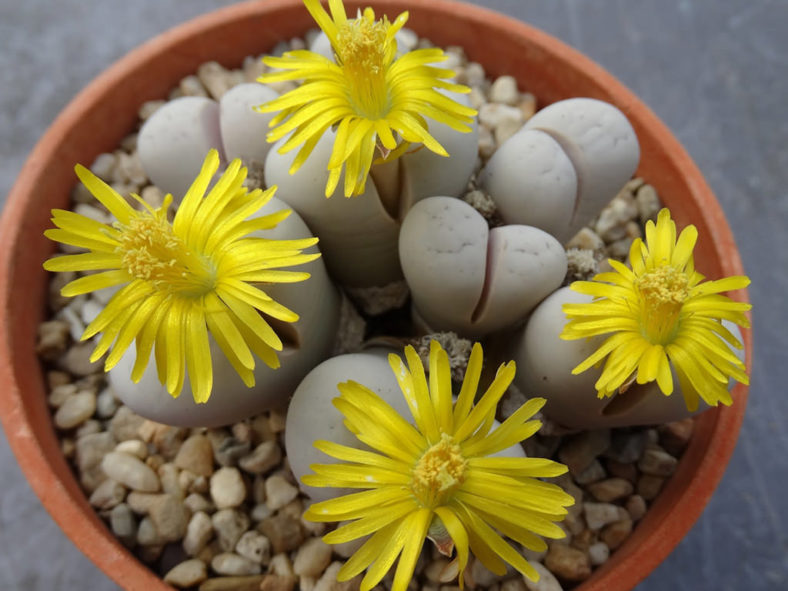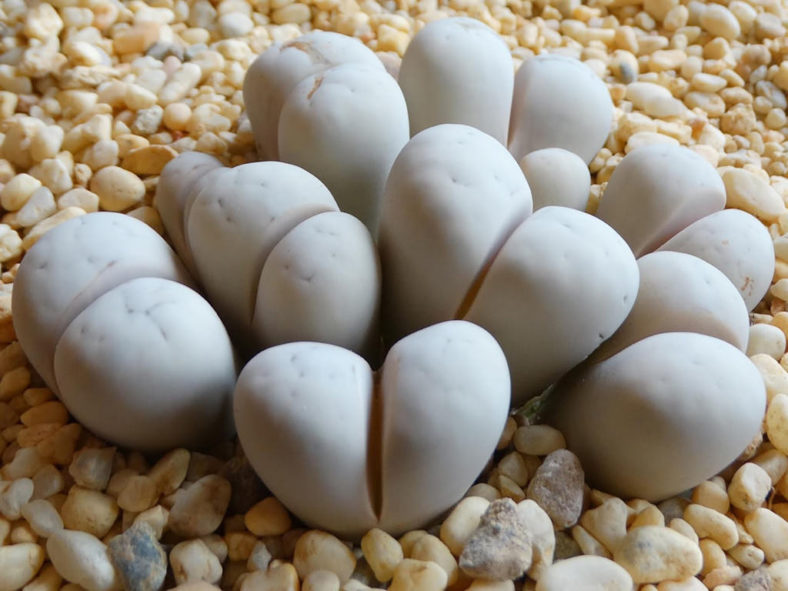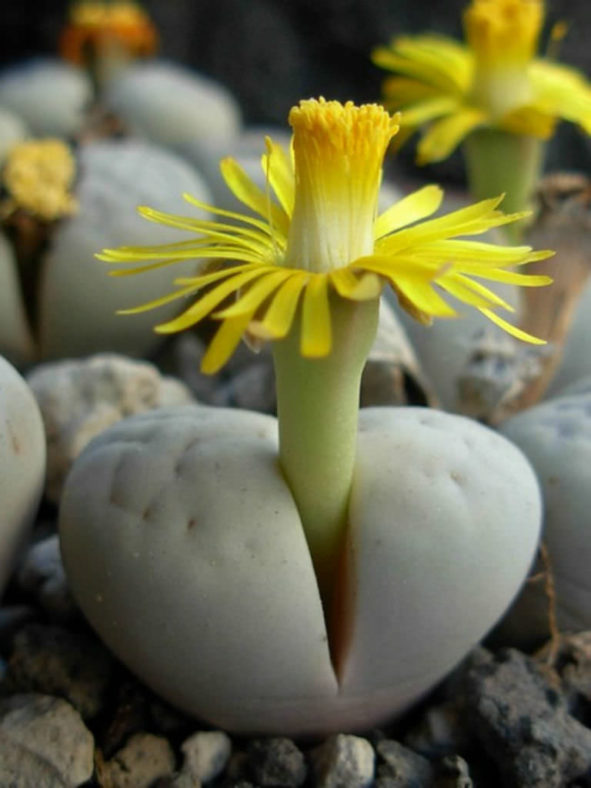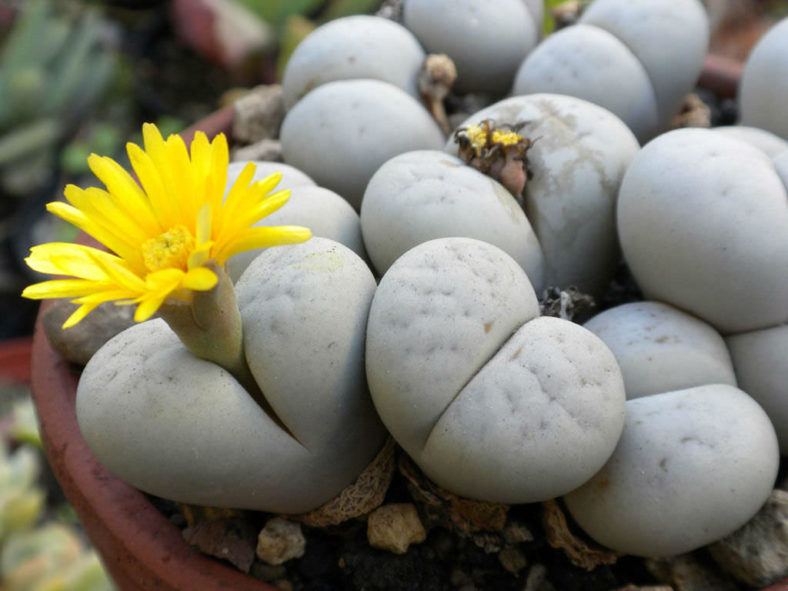Scientific Name
Lithops ruschiorum (Dinter & Schwant.) N.E. Br.
Common Name(s)
Bushman's Buttocks, Hottentot's Buttocks
Synonym(s)
Lithops ruschiana, Lithops ruschiorum var. ruschiorum, Mesembryanthemum ruschii, Mesembryanthemum ruschiorum
Scientific Classification
Family: Aizoaceae
Subfamily: Ruschioideae
Tribe: Ruschieae
Genus: Lithops
Etymology
The specific epithet "ruschiorum (roos-kee-OR-um)" honors Ernst J. Rusch (1867–1957), a German farmer and businessman in Namibia who collected the species in 1923.
Origin
Lithops ruschiorum is endemic to Namibia. Its natural habitats are rocky areas and cold deserts.
Description
Lithops ruschiorum is a stemless succulent that usually grows in a clump of 5 to 6 bodies or occasionally forms large clumps of up to 60. Each body consists of a pair of opposite thick fleshy leaves separated by a deep fissure. The leaves are bluish-grey, sometimes yellowish or brownish. The new growths are distinctly brownish. The upper surface of the bodies can measure up to 1.6 inches (4 cm) long and up to 0.8 inches (2 cm) wide at the fissure. The lobes are convex at the top, usually with a few red lines and dots, often very faint, sometimes distinct, but occasionally absent. A few faint bluish dots may also be present.
The solitary yellow flowers appear in the fall and can reach up to 1.2 inches (3 cm) in diameter. The fruits are 5-locular capsules with tiny brown seeds.

Hardiness
USDA hardiness zones 10a to 11b: from 30 °F (−1.1 °C) to 50 °F (+10 °C).
How to Grow and Care
These plants develop a new set of leaves every year, with new leaves emerging in the fall and growing through the winter and into the summer. Lithops will be dormant in late summer, and water should be severely restricted to prevent bursting leaves. The flowers appear near the end of summer or fall, first as a small bud forcing its way between the leaves, and growth will begin again. It's safe to water during this period. The leaves will still grow into the winter, but you should stop watering, even as the older leaves shrivel and encase the new growth. In the spring, it's safe to begin lightly watering again as the plant begins to grow again, heading toward its summer dormancy period and the emergence of new leaves in the fall.
Lithops are very slow-growing, small plants, making them ideal as houseplants (once you get the hang of their watering schedule). Older plants form attractive clumps of "pebbles" in their pots, which are highly prized. In general, plants should only be repotted if there are cultural problems (soggy soil) or the plant has outgrown its dish container, which will only happen every several years.
Learn more at How to Grow and Care for Lithops.
Subspecies
Links
- Back to genus Lithops
- Succupedia: Browse succulents by Scientific Name, Common Name, Genus, Family, USDA Hardiness Zone, Origin, or cacti by Genus
Photo Gallery
Click on a photo to see a larger version.


